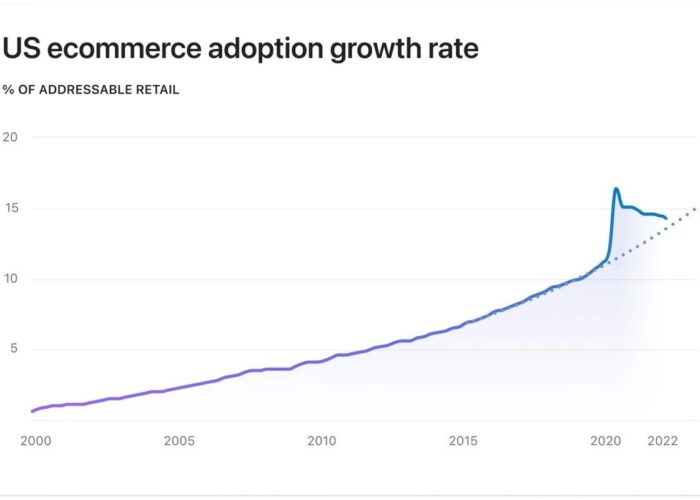Many eCommerce investors and entrepreneurs fear a change in the search engine algorithms of Google or Amazon. Rightly so, a brand’s position in search engine results can have a material impact on sales. This is analogous to selling a product in Walmart with a prime display location and having it moved next to the restrooms.
Algorithm updates can lead to changes where your product is listed in search engine results. However, all brands and products are not impacted evenly. Why are there differences? Closer examination is needed to understand the likelihood of a significant algorithm change and whether it would likely have a material impact to your brand’s sales.
Based on our experiences and research, algorithm changes are real and frequent. However, if your brand focuses on your core tenants of providing high quality products, listings, and customer service, algorithm changes are a very manageable risk and in many cases they may ultimately benefit you relative to nefarious brands that knowingly violate the playing rules set out by Amazon and Google.
Why Do They Change the Algorithm and What are Google/Amazon Seeking?
According to industry experts at Moz, a SaaS firm whose software is used to track eCommerce marketing analytics, Google reported over 3,000 improvements to search in 2018, more than 8 times the number of updates in 2009 and an average of almost 9 per day. The vast majority of the time, the updates do not noticeably impact search results and website owners do not even notice. However, there have been a few significant times when Google has made updates that caused obvious changes in rankings and traffic rates. Due to their significance, industry participants, Google, or Amazon have named these algorithm changes clever titles such as Panda, Penguin, or Amazon’s less excitingly titled A9/A10 changes.
To better understand the potential impact to a brand due to a search engine algorithm change, it is important to know what is prioritized by Google or Amazon. Both Google and Amazon are seeking two primary objectives, (1) continue to nurture and grow their paid advertising revenue streams and (2) provide the most appropriate product or content for which a person is searching. The reason why #2 is important, it drives increased sales, which keeps the virtuous cycle growing. Google has publicly disclosed its prioritization which is designed to help individuals using its search engine find the most relevant content. Their prioritization is largely based on their self-named acronym E.A.T.
- Expertise – Demonstrate significant knowledge of your industry
- Authoritativeness – Others regularly cite your knowledge of your industry
- Trustworthiness – Delight your customers (good reviews) and respond quickly to complaints
Google’s major algorithm changes have been designed to elevate companies that excel in these three areas. Major changes such as Panda and Penguin were designed to de-prioritize online retailers and affiliate marketers that provided limited value to consumers and stuffed their sites with key words and content not relevant to users. Additionally, these major upgrades by Google were designed to eliminate brands that violated Google’s terms of service by engaging in tactics such as making improper claims or participating in customer review manipulation (fake reviews, deleting negative reviews, etc.).
Amazon’s search engine algorithm is relatively similar to Google in its primary objectives. According to industry experts, Amazon has been placing increasing search ranking emphasis on:
- Sales History – Consistent sales growth over time is viewed favorably relative to potentially manipulated sales spikes
- Organic Sales – Although Amazon wants to grow its paid advertising business, they also prioritize organics sales on their site as this is deemed to indicate that customers value your products
- Seller Feedback Ratings – Good customer support is critical to both Amazon and an online brand
- Impressions – Impressions are the number of views people see of your product. Amazon is not only interested in views on their site, but also other sites as well (including your own). A significant number of impressions helps Amazon determine if your product is considered desirable by customers
- Click Through and Conversion Rates – When people see your product, how often do they click on it and ultimately buy it? The higher the conversion rate, the more attractive your products are perceived. High quality listings including excellent photography and lifestyle images help in this area
In addition to the above, the importance of quality reviews cannot be overstated for either Amazon or Google. These reviews must be obtained in a manner that complies with Amazon’s or Google’s terms of service – that is, doesn’t “game” reviews, or the brand faces a material risk of backlash from future algorithm changes.
Regular changes to search algorithms that are out of a brand’s control can seem alarming. However, these changes are analogous to when retailers consistently re-merchandise their stores. Typically, re-merchandising (moving items from one area to another) is designed to keep consumers interested in the store and are not significant changes. Occasionally, a retailer will engage in a store re-fresh that can be more dramatic and have a more significant impact on a brand’s sales. Although product location risks are real in both a digital or in-store environment, in the online channel Google and Amazon are not traditionally buying the product (only a marketplace facilitator if using Amazon’s Seller Central platform). This difference is important as it provides the brand a degree of control by optimizing their product listings and trying other tactics to counter act any search engine changes. In traditional brick & mortar, the brand has less ability to combat store merchandising changes.
How Does a Brand Protect Against an Algorithm Change?
In a landscape of continually changing search engine algorithms, how can a brand protect and grow its business in a constructive manner? In short, give the algorithms what they want. Consistently, both Google and Amazon have made changes that punish cheaters, ie, those that “game” reviews, and favor good content and good products that have demonstrated value to consumers. Industry experts at Brightedge recommend:
- Think less about the search engine and more about your end-user
- Create content that will engage readers at every stage of the buyer’s journey
- Develop a site that is easy to navigate
- Use a variety of types of content, including images, videos, infographics, and text
- Perpetually monitor your site so that you can identify any changes in traffic rates and correct any drops as quickly as possible
Although the advice above is referencing how to operate in a digital environment, it is consistent with how quality consumer brand companies have operated for decades. Focus on the right brand building aspects, manage your business closely, and give the consumer what they want, where they want it.
Sources: Moz, SEMrush, Search Engine Journal, Brightedge, Sellerapp.com




